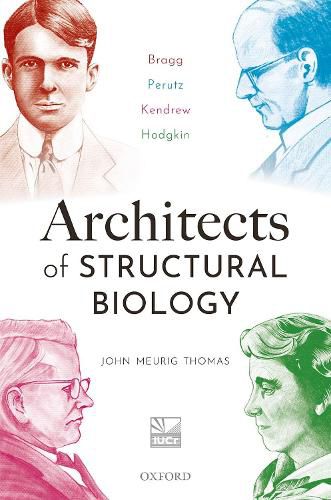Readings Newsletter
Become a Readings Member to make your shopping experience even easier.
Sign in or sign up for free!
You’re not far away from qualifying for FREE standard shipping within Australia
You’ve qualified for FREE standard shipping within Australia
The cart is loading…






Architects of Structural Biology is an amalgam of memoirs, biography, and intellectual history of the personalities and single-minded devotion of four scientists who are among the greatest in modern times. These three chemists and one physicist, all Nobel laureates, played a pivotal role in the creation of a new and pervasive branch of biology. This led in turn to major developments in medicine and to the treatment of diseases as a result of advances made in arguably one of the greatest centres of scientific research ever: the Laboratory of Molecular Biology in Cambridge, which they helped to establish. Their work and that of their predecessors at the Royal Institution in London reflects the broader cultural, scientific and educational strength of the UK from the early 19th century onwards. The book also illustrates the nurturing of academic life in the collegiate system, exemplified by the activities of, and cross-fertilization within, a small Cambridge college.
$9.00 standard shipping within Australia
FREE standard shipping within Australia for orders over $100.00
Express & International shipping calculated at checkout
Architects of Structural Biology is an amalgam of memoirs, biography, and intellectual history of the personalities and single-minded devotion of four scientists who are among the greatest in modern times. These three chemists and one physicist, all Nobel laureates, played a pivotal role in the creation of a new and pervasive branch of biology. This led in turn to major developments in medicine and to the treatment of diseases as a result of advances made in arguably one of the greatest centres of scientific research ever: the Laboratory of Molecular Biology in Cambridge, which they helped to establish. Their work and that of their predecessors at the Royal Institution in London reflects the broader cultural, scientific and educational strength of the UK from the early 19th century onwards. The book also illustrates the nurturing of academic life in the collegiate system, exemplified by the activities of, and cross-fertilization within, a small Cambridge college.